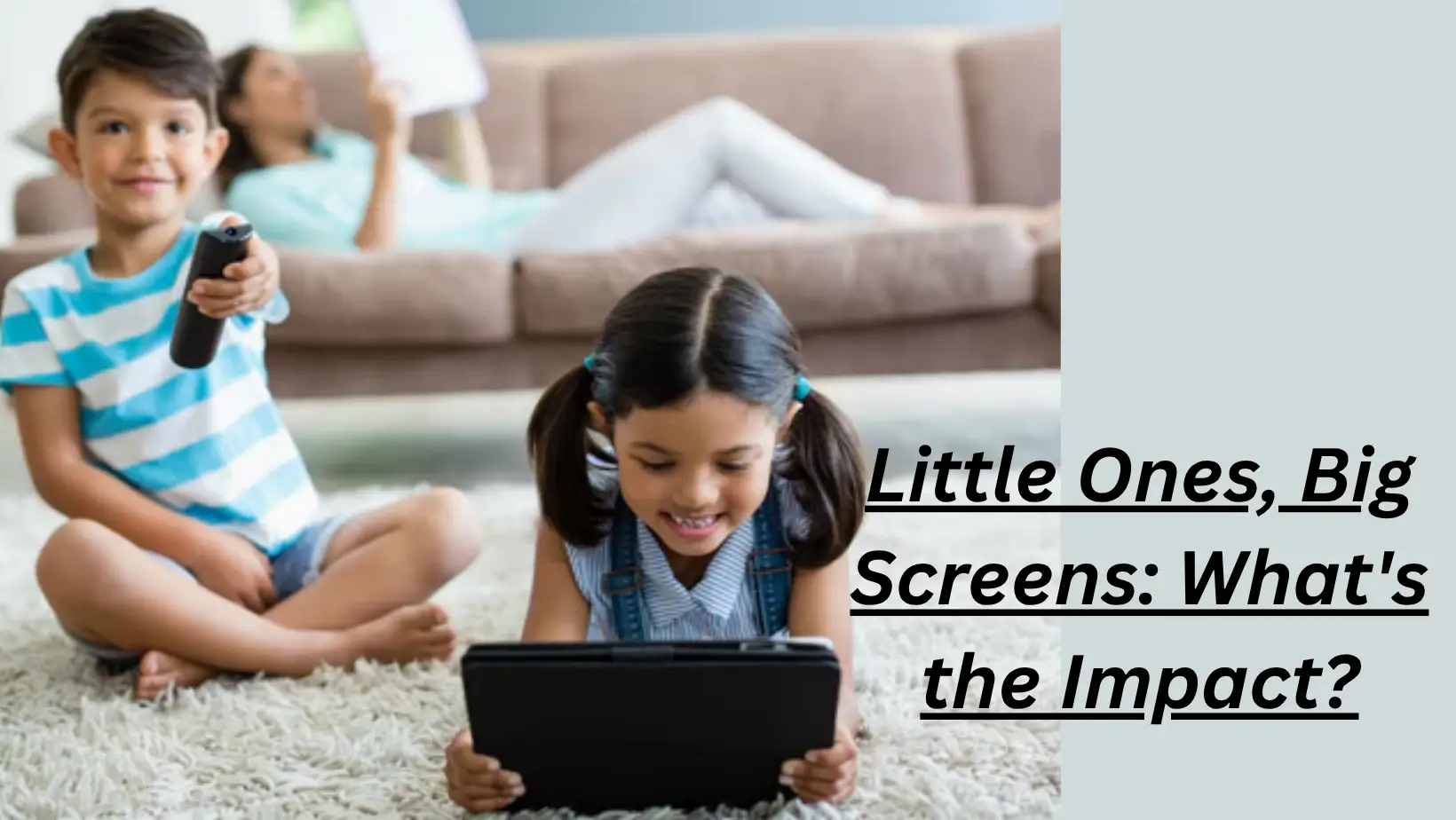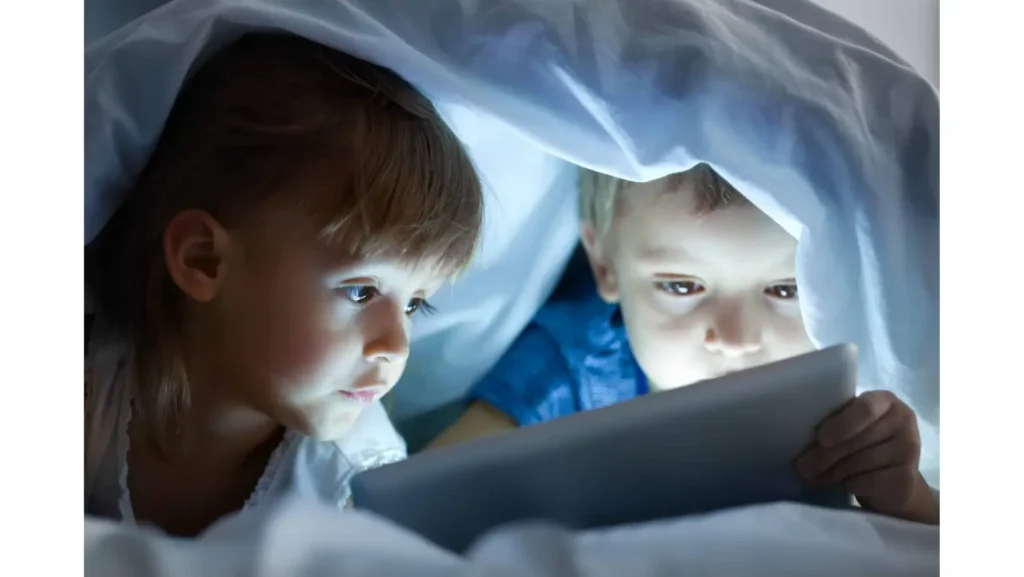
Technology is everywhere nowadays. Young children are raised with it in their lives. We have phones, tablets, and televisions in almost every room of our houses. Many parents wonder how it benefits and harms children. We need to pay close attention to this. Knowing the effects of faint screen time is significant, especially for young kids.
The Two-sided Sword of Technology: Rewards and Consequences
There are ways that digital technology can provide children with engaging opportunities to learn. Interactive applications help children learn the letters of the alphabet, and educational games reinforce numbers. The potential of children’s minds and imagination is their ability to explore places they have never been and learn about many cultures in the world.
Technology supports fortunate children who learn the same lessons much more quickly; it absorbs them. This method of learning can support many other modalities of learning, including visual and auditory learning. Technology also helps develop fine and gross motor skills. It also helps develop hand-eye coordination for children. Some applications promote creativity and develop problem-solving skills.
But there are real concerns. Too much screen time can be detrimental. It can lead to health-related problems. They gain too much weight, their eyes become strained, their sleep cycle becomes disrupted, and neck and back pain develop. These health issues are physically shown by us.
And above these health issues, behavioral issues occur. Children who are glued to screens miss out on these activities as well.
They miss outdoor play. They neglect real-life interactions. Also, they feel frustration, and they experience behavioral aggression. Some studies have even shown that excessive screen time also threatens the ability to pay attention and exhibit focus, which is a learned behavior during the early years of childhood.

Read more: 7 Psychological Laws Ruling Your Mind
The Developing Brain: A Psychosocial Perspective
The young brain is incredibly fragile and expands quickly. Technology is changing the structure of the developing brain. Early screen exposure can alter the course, specifically in language development. Children learn fewer words when screens displace talking and face-to-face communication is critical for language development because it provides rich feedback and response. Screens do not provide this social exchange and vital communication.
In addition, technology is affecting social skills development. First, children need to understand how to read people’s faces and body language, as real-life interactions are critical to developing things like empathy. Technology reduces children’s interactions and experiences with the social world.
A child might rather text anyway, and with a texting relationship, children miss social cues and non-verbal clues. This makes it harder to create deep connections and become internalized with social conflict resolution strategies. Isolation is a common impact of technology on children.
The Unseen Consequence: Attention and Emotion
Today’s children want fast outcomes. A swipe provides instantaneous rewards. This instantaneous verbiage has created a window of patience. They expect speedy gratification in all things. This leads to hardships with waiting. This leads to difficulties with sustained attention. Their ability to pay close attention to completing tasks suffers.
Homework or even reading sustains a place difficulty when completing. Researchers have scientifically studied attention spans and have determined that attention spans are shrinking. Attention spans have decreased for the average citizen since 2000, only recording an overall average of delivery times from twelve seconds to a mere eight.
Technology has even introduced differences in emotional understanding and regulation. Children also utilize screens as a way to sequester and manage their feelings. Children are using screens as a means to avoid the trauma of their emotions. Therefore, they are not learning any coping skills they may need due to avoidance.
They also are not learning how to manage their frustration or distress, and therefore they miss learning a way in which to emulate emotional development. Screens have created new worlds and experiences for children, and in some cases, enhanced anxiety. Notifications rallying for attention at all hours create anxiety for immediate response. Most children find that all social media has to provide an opportunity for user “perfection,” which becomes envy and therefore low self-esteem.

Beyond the Screen: Real World Skills
Playing is a mode of learning. Children need to be able to explore. They need to be able to construct with blocks. They need to be able to run and jump. Also, they learn essential skills. They learn about gravity. They learn to solve real-world problems. Even, they develop strength and muscle. Often, screens take over physical play. Children can spend hours in front of a screen. Their bodies need more movement.
Imagination can thrive in physical play. When children play, they create fantastic worlds. They invent “new” games. They create complex stories. The screen gives them ready-made content. Screens can limit ways of thinking creatively. Children become consumers. Children do not become creators. Limiting creativity can have lingering effects on innovation. It can affect their abilities as problem-solvers down the road.
The Role of Parents: Establishing Limits
Parents have a big role. They limit screen time. As parents, they make the rules. There are age-appropriate suggestions available. Toddlers should only have limited screen time/duration. Older children can have limited screen time. Parents should also help their children choose educational content that has value. And essential—watch it with them, so you can find meaning in it together, and they can learn…. not to mention the shared experience and the potential talking points.
Things like tech-free zones help as well; bedrooms, meal times (which promote the start of family connection), etc., need to be screen-free, meaning we need relationship time, and conversation needs to stay a part of those things. Parents have to model good practices as well – kids model behaviour. If a mother looks at her phone all day long, why shouldn’t the child do it too? Parents have to limit their screen behavior to model a healthy use of technology.
Follow that up with suggesting things that aren’t screen time. Give books, games, and craft supplies. Plan outdoor activities—walks, trips to parks, sidewalks, trails, or camping. Arrange for playdates. Enrol them in sport or hobby activities, and if nothing is scheduled, let them go outside and play. Board games are also great ideas! All those alternatives provide a valuable learning experience. They learn social skills, learn to manage competition and deal with winning and losing, and their physical health, etc.
Read more: Heal With Faith: 6 Islamic Insights

Moving Forward: The Rise of Balance
Technology is a worldwide reality that we cannot ignore, but it must be used responsibly. For young children, in particular, we need to exercise caution. Their growth and development come first. Their physiology is important. Also, their emotional health is crucial. Their developing social skills need to be fostered.
Educational technology can be a tool. It is not meant to be the lead teacher. Many interactions cannot be replicated in technology. There is no substitute for human interactions! So, we must put limits on all educational technology and maintain balance; use the best content; we have a responsibility to young children. We are preparing them for their future; and we are helping them flourish.



Leave a Reply